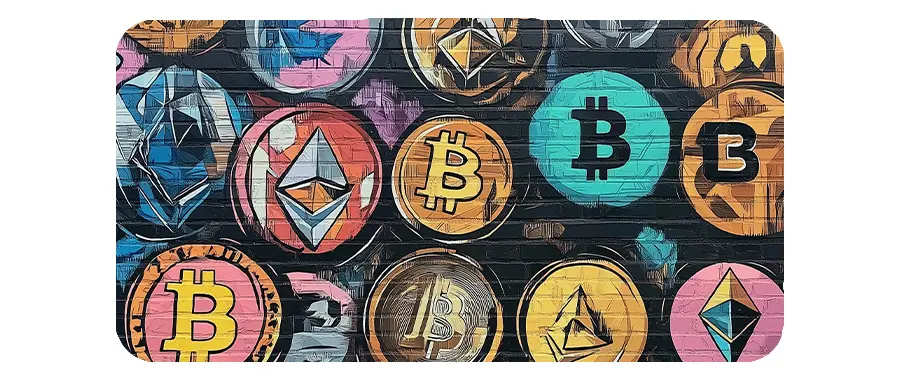An Alternative Approach to Valuing Ethereum Tokens
The valuation of blockchain tokens has always been a hot research topic within the crypto ecosystem.
Regarding the valuation of Bitcoin, many articles have explored the relationship between the price of the coin and the shutdown price of mining. However, when it comes to Ethereum and even broader blockchain networks based on POS or DPOS consensus mechanisms, while there are numerous articles discussing what factors are related to the tokens, there seem to be few that are logically convincing.
Taking Ethereum as an example, many times, our estimates of Ethereum's (future) price are simply made by comparing it to Bitcoin's market capitalization.
This method cannot be said to be unfounded, but I believe it lacks consideration of the essence and characteristics of Ethereum, as the value acquisition of Ethereum is distinctly different from that of Bitcoin.
For instance, many people say Bitcoin is "digital gold," while Ethereum is "digital oil."
If the distinction between the two is akin to that of "gold" and "oil," can Ethereum's valuation be simply compared to Bitcoin in the manner described above?
This is clearly inappropriate.
Recently, I read an article by Messari about the "economic security" of POS/DPOS blockchains.
The so-called "economic security" refers to the relationship between the value of tokens used for collateral in POS/DPOS blockchains and the security of the blockchain.
For example, if the circulating supply of Ethereum is 100 million tokens, with one-third being used for POS collateral. If the current price of Ethereum is $3,000, then the value of Ethereum used for collateral is $100 billion. The "economic security" of the Ethereum blockchain is guaranteed by this $100 billion.
The core discussion of this article is whether "economic security" is as important for the security of POS/DPOS blockchains as many in the industry imagine.
This topic is not directly related to the valuation of Ethereum. However, one scenario mentioned in the article made me wonder whether the described method could be used to value Ethereum or more broadly, POS/DPOS blockchain tokens.
The author of the article hypothesized a scenario:
For instance, if I have $10 million in USDC, but the collateral value of the POS blockchain where my $10 million USDC is located is only $100, would I dare to put these USDC on this blockchain?
Definitely not.
Why?
Because if the total value of the tokens collateralized by all nodes is only $100, then a malicious actor could easily bribe these nodes with $1,000 (10 times the collateral value) to seize the $10 million USDC on the chain.
For these nodes, even if they cooperate with the malicious actor and cause their $100 collateralized tokens to be completely confiscated, the $1,000 bribe they receive is still quite tempting.
For the malicious actor, the cost of $1,000 is negligible compared to the $10 million USDC gain.
So while there may be debates about how much "economic security" is sufficient to make people believe that this POS blockchain is secure, we can at least draw a bottom line:
The collateral value of this POS blockchain must not be less than the total value of the assets on the chain.
Following this line of thought, let's attempt a very conservative estimate of Ethereum's price.
I checked the data on defillama (https://defillama.com/). As of the time of writing, the total value locked (TVL) on the Ethereum mainnet and various layer two expansions (OP-Rollup and ZK-Rollup) is approximately $70 billion.
The Ethereum Foundation, including Vitalik, estimates that one-third of the future circulating tokens of Ethereum (120 million tokens) may be used as collateral. If we calculate based on today's price of Ethereum ($3,200), the collateral value of one-third of the circulating tokens would be approximately $128 billion.
So the current situation of Ethereum is that approximately $128 billion of "economic security" is safeguarding the total of $70 billion in assets on the Ethereum mainnet and its layer two expansions.
If we believe that the future crypto ecosystem will recreate an on-chain economy for humanity, assuming that the TVL of this economy in the Ethereum ecosystem could reach our country's foreign exchange reserves in 2023 ($3.24 trillion), then the value of the collateralized tokens in the Ethereum blockchain would need to be at least $3.24 trillion.
If we are conservative, assuming that this $3.24 trillion is the value of the entire circulating supply of Ethereum tokens, then the price of Ethereum tokens would be approximately $27,000.
In this calculation process, the data and materials I referenced are entirely based on my own preferences; this is not the key point. The key is that this valuation approach can generally outline a valuation floor for blockchain ecosystem tokens.
In fact, it can be used not only to assess the future price floor of Ethereum but also to evaluate the future price floor of any POS/DPOS blockchain token.
Writing this somewhat "fantastical" valuation method today is purely inspired by reading that article, prompting me to think about valuation from another perspective.








